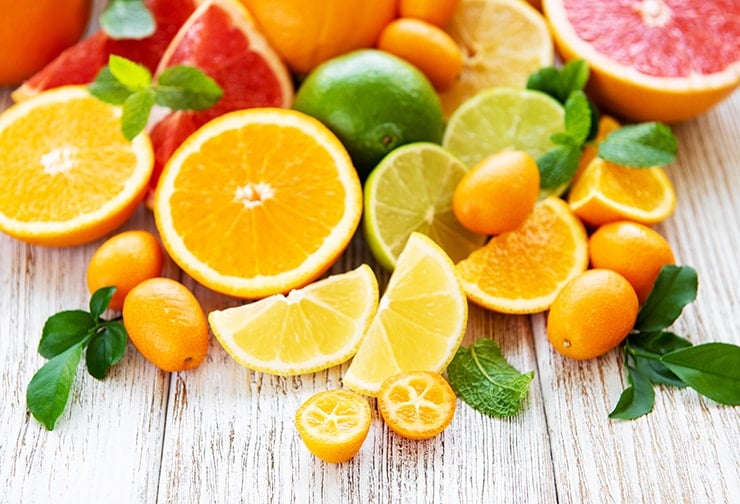Our modern diet has many dangers for your teeth. The high carbohydrate content in many foods feeds oral bacteria that then produce an acidic excretion that attacks your tooth enamel, leading to cavities that need fillings or worse. However, many foods are acidic on their own, and should be consumed with caution.

How Acidic Is Too Acidic?
Acidity is measured using the pH scale, which indicates the concentration of free H+ ions in them. These free ions are what attack and can break down your tooth enamel. Seven is neutral, and the lower the pH, the more of them they are. It’s a logarithmic scale, so every number you go down represents a tenfold increase in pH. Technically, your teeth can start to break down at a pH of 5.5, but the foods and drinks you consume don’t necessarily drop your mouth pH to the level of their acidity. You don’t have to be too concerned about the acidity of foods and drinks until it drops below 4.
Not All Citrus Is Created Equal
Consuming citrus fruit is good for you because it contains vitamin C and other nutrients. However, they can also be very acidic. The good news is that they’re not all equally acidic.
For example, oranges can have a pH of about 3.7-4.3, so either mildly damaging or relatively safe for your teeth. Marmalade, though, is lower, about 3.0-3.3, so spread it thin.
On the other hand, grapefruits are a little stronger, ranging from 3.0-3.8 and lemons and limes are much stronger: their pH could be as low as 2.
If You Like It Hot
It’s worth noting that many chili sauces have vinegar included, as well as other acids that help prevent the growth of bacteria. Sometimes these sauces can be very low on the pH scale, a 2.8, more acidic than a grapefruit. If you’re eating food with a lot of vinegar-filled hotsauce, this could be damaging your teeth.
Grapes not so Great for Your Teeth
Grapes can be quite acidic, with Concord, Niagara, and Seedless grapes all having pH below 3.0. It’s worth noting that this acidity is actually further intensified in jams and wines.
Not Berry Nice
Many types of berries have a naturally low pH. These include raspberries, cranberries, gooseberries, and loganberries. The pH also intensifies when juiced or made into jam. While we’re on the subject, pomegranates also have a pH below 3, as do many types of plums.
Hydrate with Water
Another type of drink that has a surprisingly low pH is sports drinks. These drinks can be a 2.0 or less on the pH scale, equivalent to straight lemon juice. They’re also a problem because if you drink them when you’re exercising and at the edge of dehydration, you might have less saliva than usual to counteract the acid, and your saliva might be acidic, too.
Drink It Up
Many other drinks have a low pH. We’ve noted some juices that have low pH, but don’t forget that soda has a low pH, ranging from 2-3, with colas being at the lower end. And don’t think skipping the sugar will save your teeth: sugar-free versions can be just as damaging to teeth.
Wine has the lowest pH of alcoholic drinks, sometimes below 3. Although hard liquors have a higher pH, if you start mixing them with sodas and fruit juices, you end up with a damaging pH as well.
For a tooth-healthy relaxer, stick to a good lager, with a pH around 4. Lighter beers also stain the teeth less.
If You Eat Acidic Foods
You don’t have to completely give up on these foods, but you should be aware of them. Cut down on consuming them, and when you do, chase with a cup of water. Chase them relatively quickly, too, since it only takes about 30 seconds for acidic damage to occur. Don’t brush your teeth right after eating these foods.
And, of course, remember to make your dentist appointments. If it has been too long since your last cleaning, please call (02) 9686 7375.

